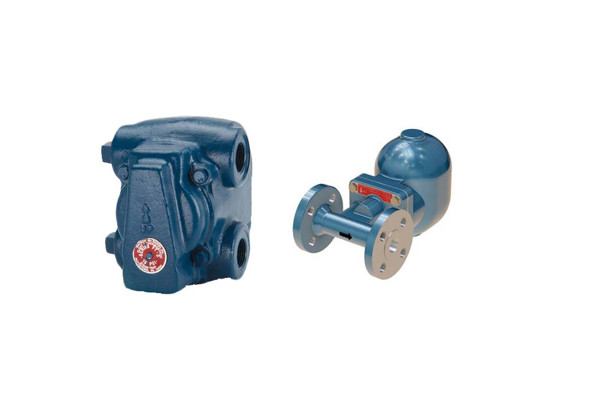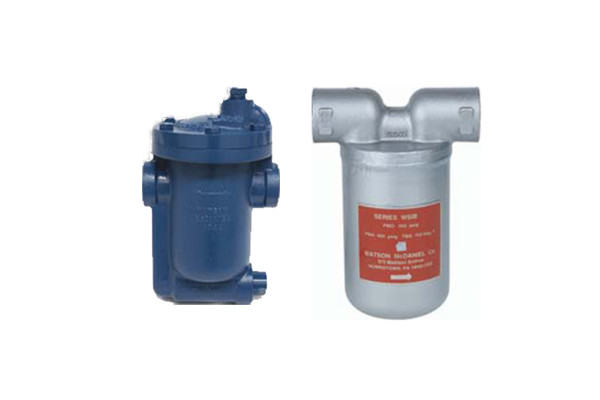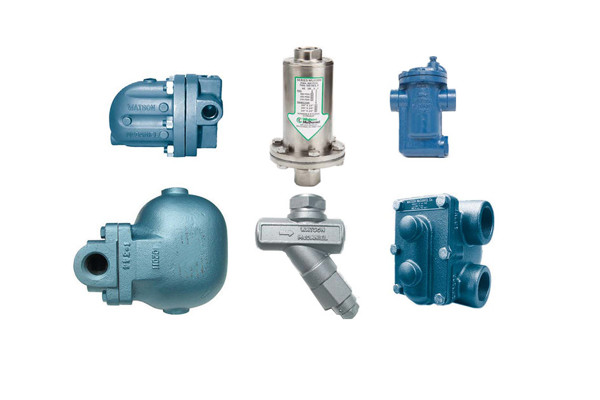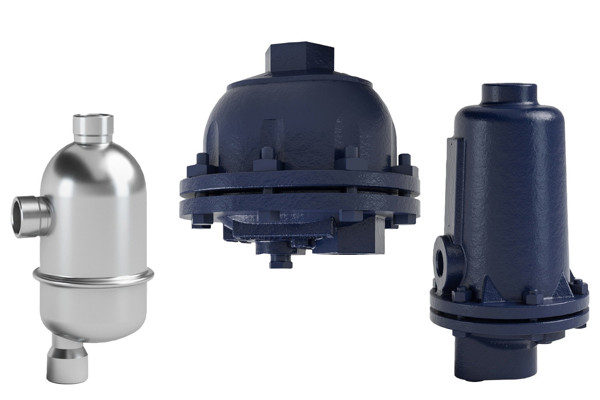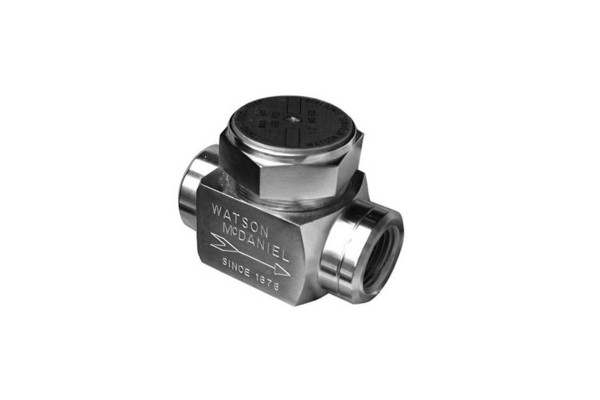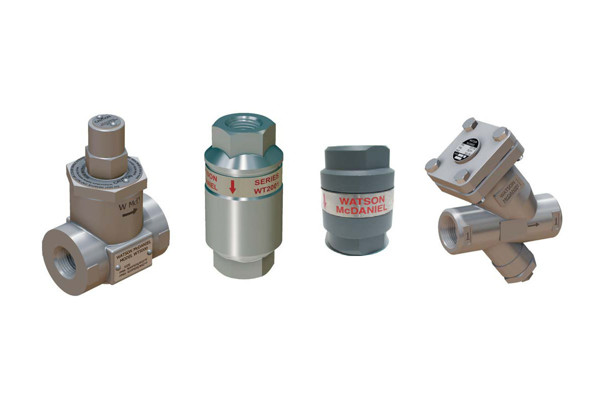Steam Traps
Steam traps are devices that are used to remove condensate from the steam pipes without losing steam in the process. Steam traps come in many different variants such as Float and Thermostatic, Inverted Bucket, thermodynamic, and more. Each one operates differently so knowing which one you will need will depend on the application. BoilerWAREhouse carries different brands such as Gestra, Watson McDaniel, Spirax Sarco and Armstrong.
If you do not see the part you want below, feel free to use the chat function and see if we possibly have the part you are looking for in stock.
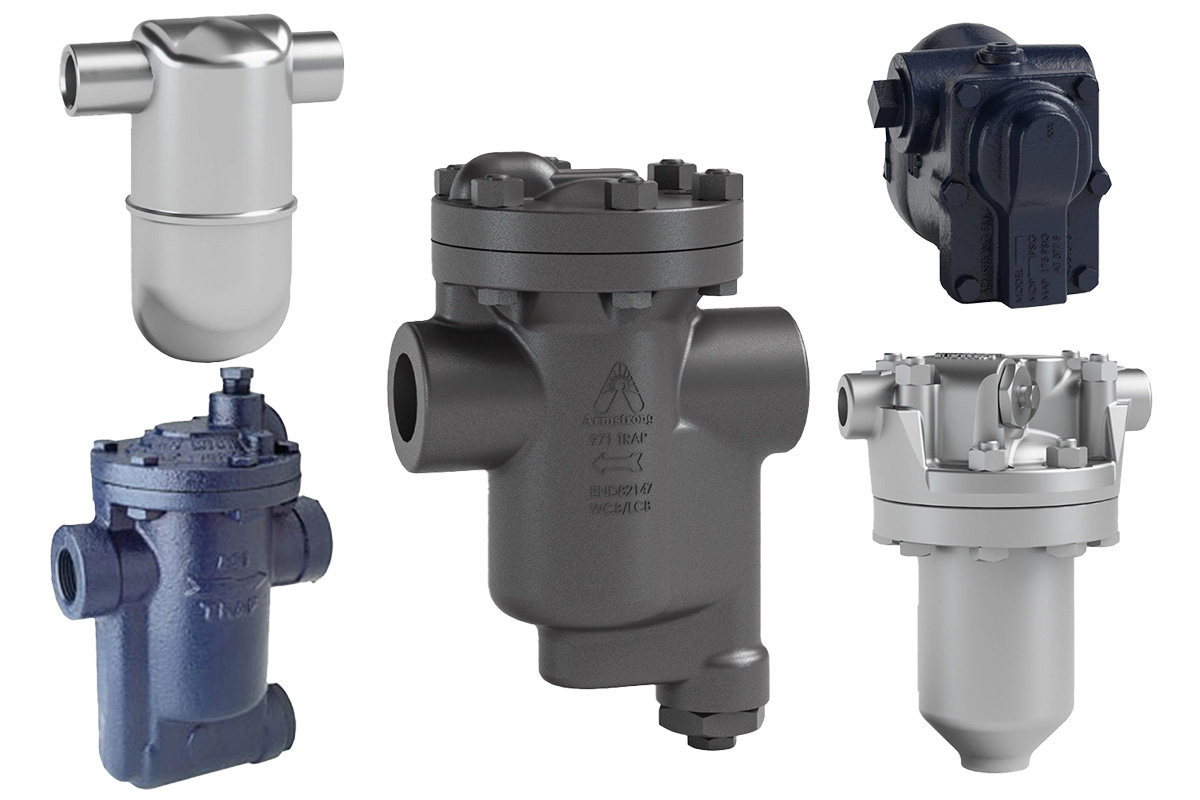
Manufacturers View all
What is a Steam Trap & What is its function?
Steam traps are used to keep condensate, air, and other unwanted substances out of the steam supply. By doing so, they protect end processes, and preserve system efficiency.Steam traps don’t actually trap steam. Rather, they trap everything that is not steam and remove it from the system without sacrificing steam pressure. They allow unwanted condensate, gases, and other impurities to collect in a reservoir, which is then purged at regular intervals to keep the steam pure.
Different Types of Steam Traps & How to Choose
Different kinds of steam traps are available, based on their purpose and location in the boiler system.
Balanced Pressure Traps
Also known as liquid style traps, balanced pressure traps use a liquid medium to control the steam trap’s valve. Based on pressure and temperature, the liquid in the valve will boil or condense, causing the trap to open or close.
Thermostatic Traps
Used in areas that are not sensitive to subcooling, these traps use temperature to trigger their purge cycle.
Thermodynamic Traps
Use flash steam to open and close the valve.
Bimetallic Traps
Indestructible, but bleeds through at low pressures and backs up at higher pressures and temperatures.
Float Traps
Just as the name implies, float traps use a valve connected to a float. The valve opens when the condensate reaches a certain level.
Inverted Bucket Traps
Use increasing levels of steam to lift an inverted bucket-shaped cylinder, which then opens the valve to release condensate and unwanted air.
The Role Steam Traps Play in a Boiler
Without a steam trap in place, condensate and unwanted air would be allowed to circulate in the steam system. This would not only reduce efficiency, it would also cause damage and corrosion in the processes supplied by the steam.
What is the Effect of a Bad Steam Trap?
When a steam trap goes bad, condensate and unwanted air will start to collect, and eventually enter the steam supply. The trap may also fail to discharge at regular intervals.
Things to Consider About Steam Traps:
- Thermostatic traps are also known as “zero-leak traps” because they do such a good job of preventing lost steam. They often pay for themselves in energy savings.
- Inverted bucket traps do a great job of releasing air and condensate at the same time. However, they do sometimes leak steam even when operating properly. They must also be primed during startup or they’ll let all your steam escape.
- Inverted bucket traps are extremely susceptible to water hammers, which can crush the internal components and destroy the valve.
- Check your steam traps and make sure they’re purging when and how they are supposed to.
Helpful Resources
Relevant WARE Videos on Steam Traps
Steam Traps | How Thermostatic Steam Traps Work and Uses
Steam Traps | Thermodynamic Trap Functions and Uses
Steam Traps | Float and Thermostatic Operations and Applications
Steam Traps | How an Inverted Bucket Trap Work
Steam Traps | Thermostatic Traps Troubleshooting
Steam Trap Testing with Infrared
Steam Traps | Troubleshooting Inverted Bucket Issues
Steam Traps | Troubleshooting Thermodynamic Trap
Steam Traps | Troubleshooting Float and Thermostatic Traps
What Are Different Types of Steam Traps
Why you should use Armstrong Steam Traps and PRVs
Steam System | Near Trap Steam Piping
Steam Study: Looking at Traps, Condensate Returns, and Insulation
Steam Study / Studies for Industrial Boilers
Boiling Point Flashback : Save Money with a Steam Study
Explore over 750+ explanatory videos on boilers and boiler systems on our Youtube channel. Our videos can help you quickly grasp complex boiler topics. Watch more here!
Relevant WARE Blog Articles on Steam Traps
Different Types of Steam Traps
Steam Trap Testing with Infrared and Ultrasound Devices
Armstrong Traps: More Than Ever, Better Than Ever
Boiler Traps, Condensate Returns, and Insulation
Our informative and educational blog content can help you gain a deeper understanding of the boiler room. Read more here!
Technical Documents
Steam Traps FAQ
What’s the most reliable kind of steam trap?
Bimetallic steam traps and bucket traps typically have the longest lives, because they have fewer moving parts. However, they are not as precise as other kinds of steam traps.
What’s the difference between a steam trap and a steam separator?
Steam traps allow condensate and other unwanted impurities to collect to a certain volume before they are drained away. Steam separators remove condensate instantly.
Are bucket traps really that simple?
Yes. That’s why they’re one of the oldest designs out there that’s still in use today.
